Abstract
A mass poliomyelitis vaccination campaign, such as that under consideration in Guatemala, inevitably changes the immunological picture of a population by the artificial stimulation of antibodies in large numbers of individuals. It was therefore decided that before carrying out such a campaign, and to provide basic information for its conduct, a survey should be made to determine the degree of natural immunity to poliomyelitis and the amount of poliovirus and other enterovirus infection in the population, and to compare the poliovirus antibody titres of a small group of children who had already received Salk vaccine with those in unvaccinated children living in this area of probable high endemicity. The results of the survey show that both poliovirus and other enterovirus infections are common at an early age in Guatemala, and it is concluded that vaccination is most indicated for the 0-4-year-old group.
Full text
PDF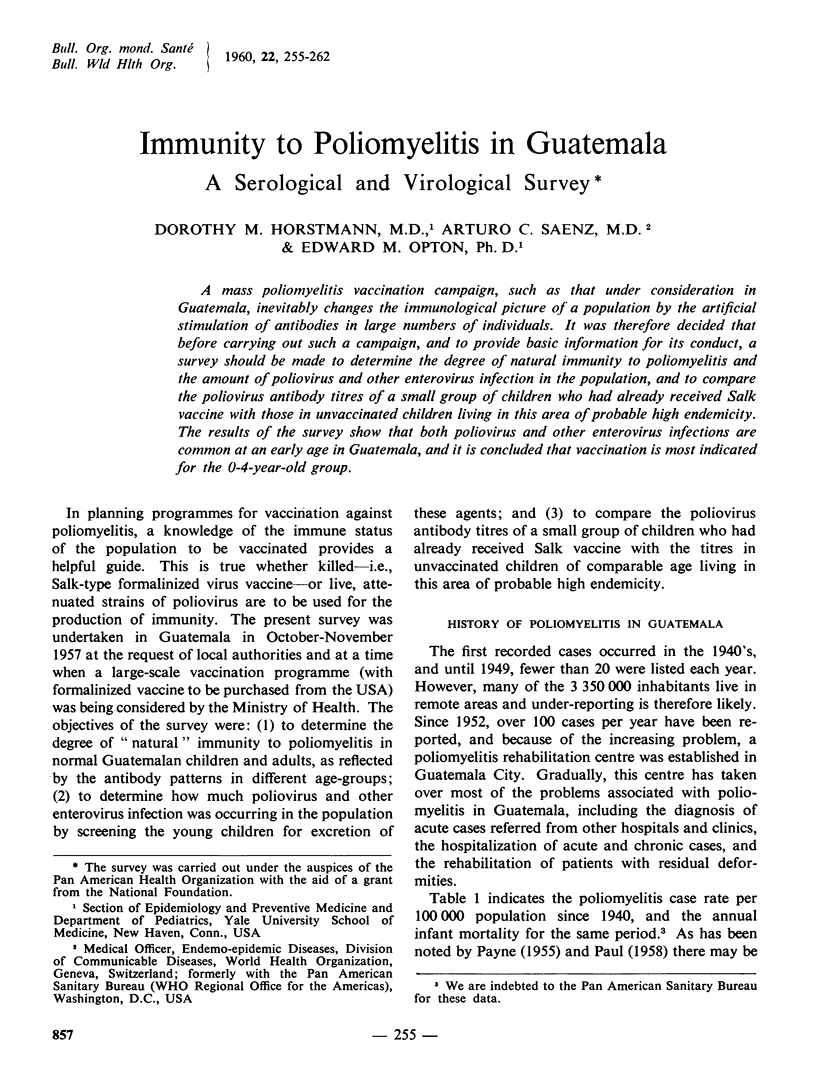
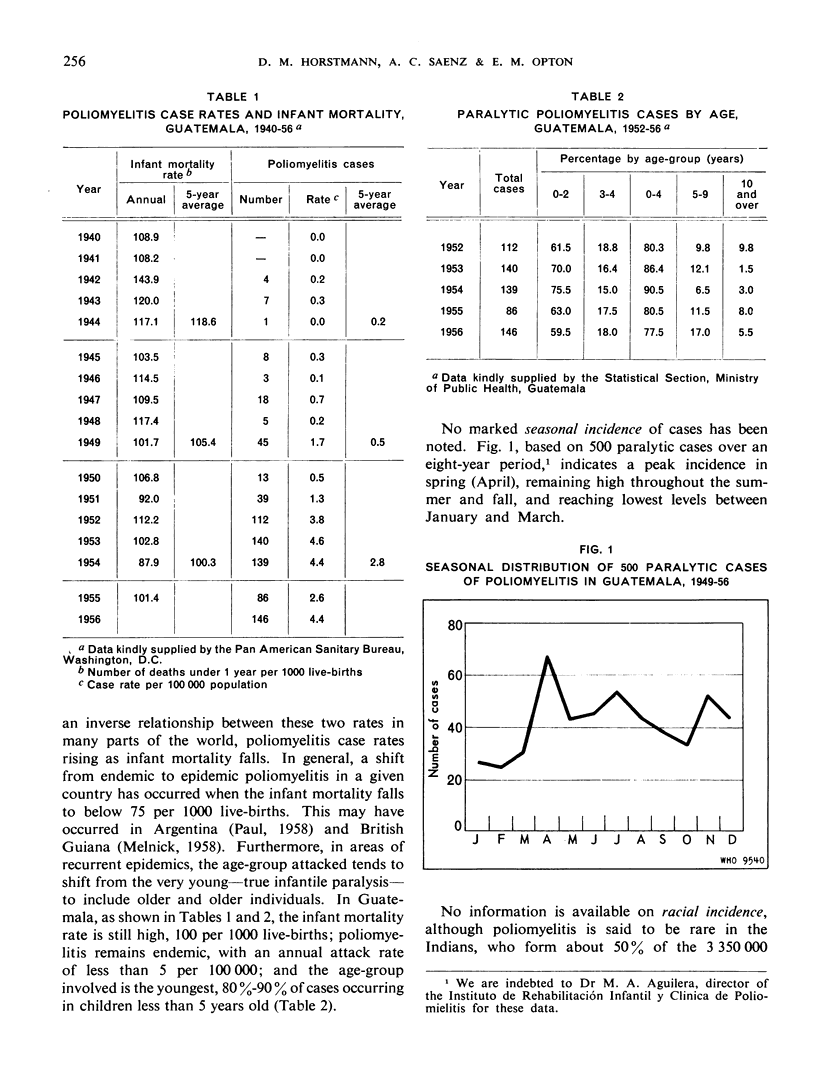

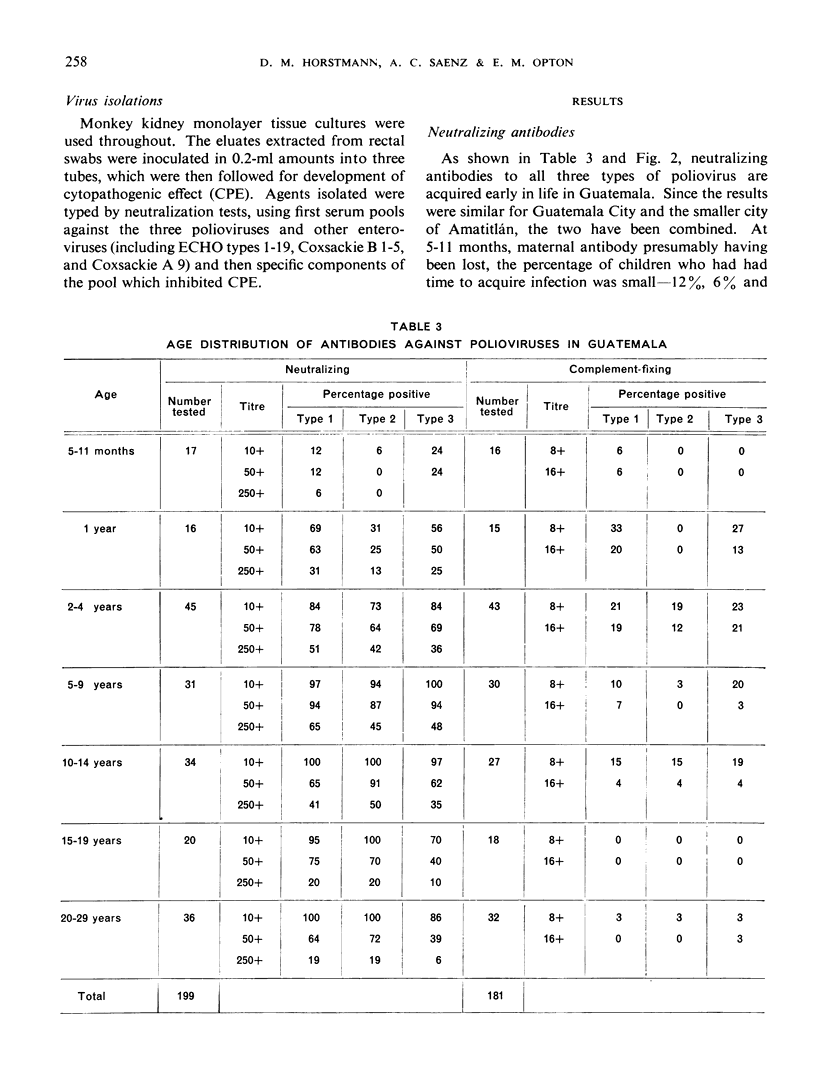
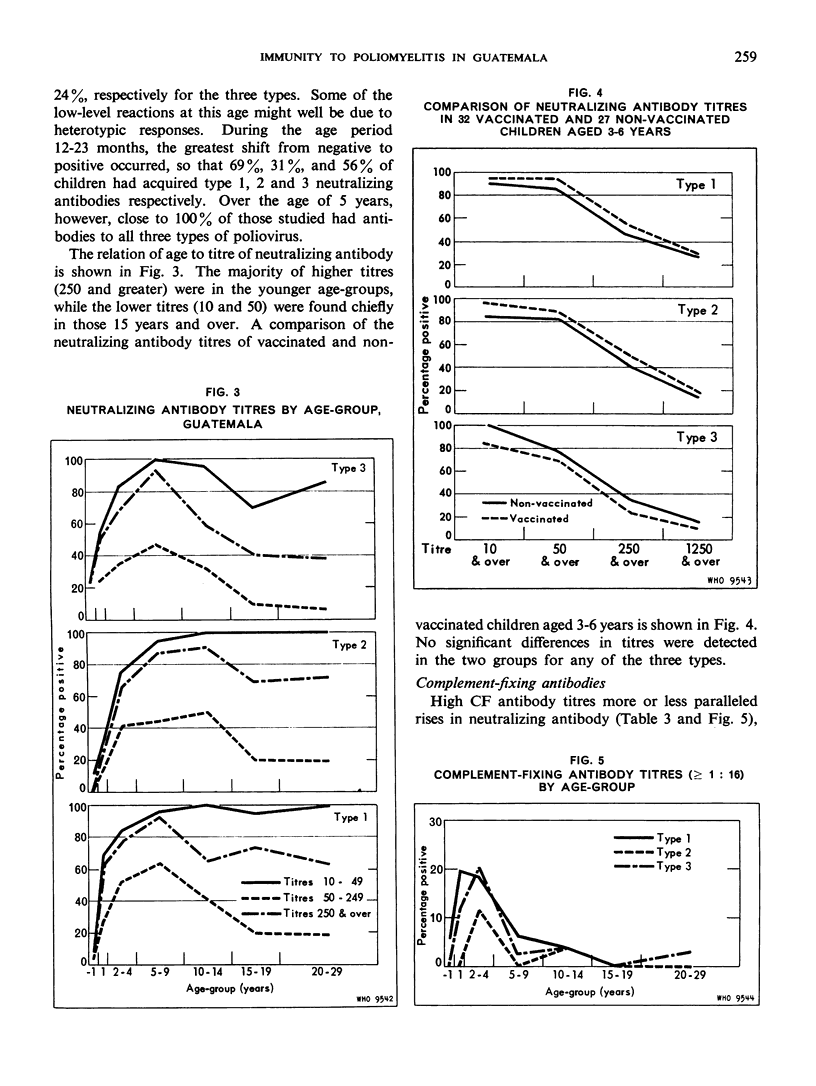

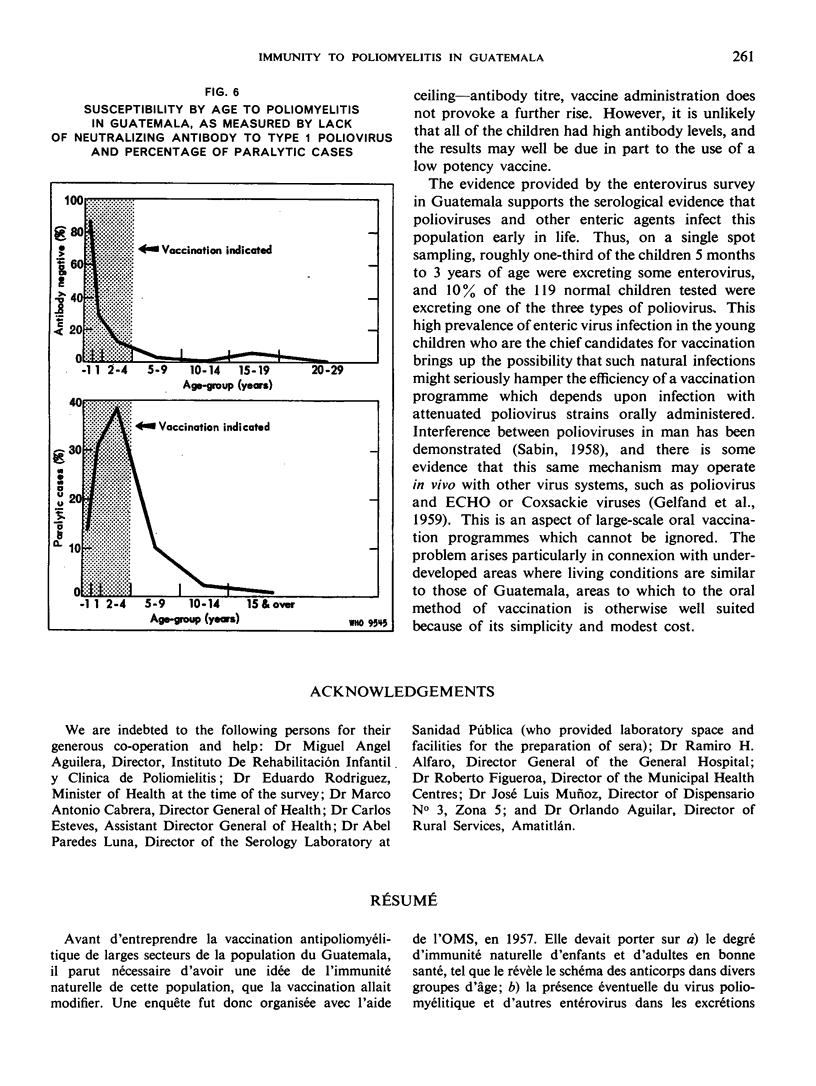
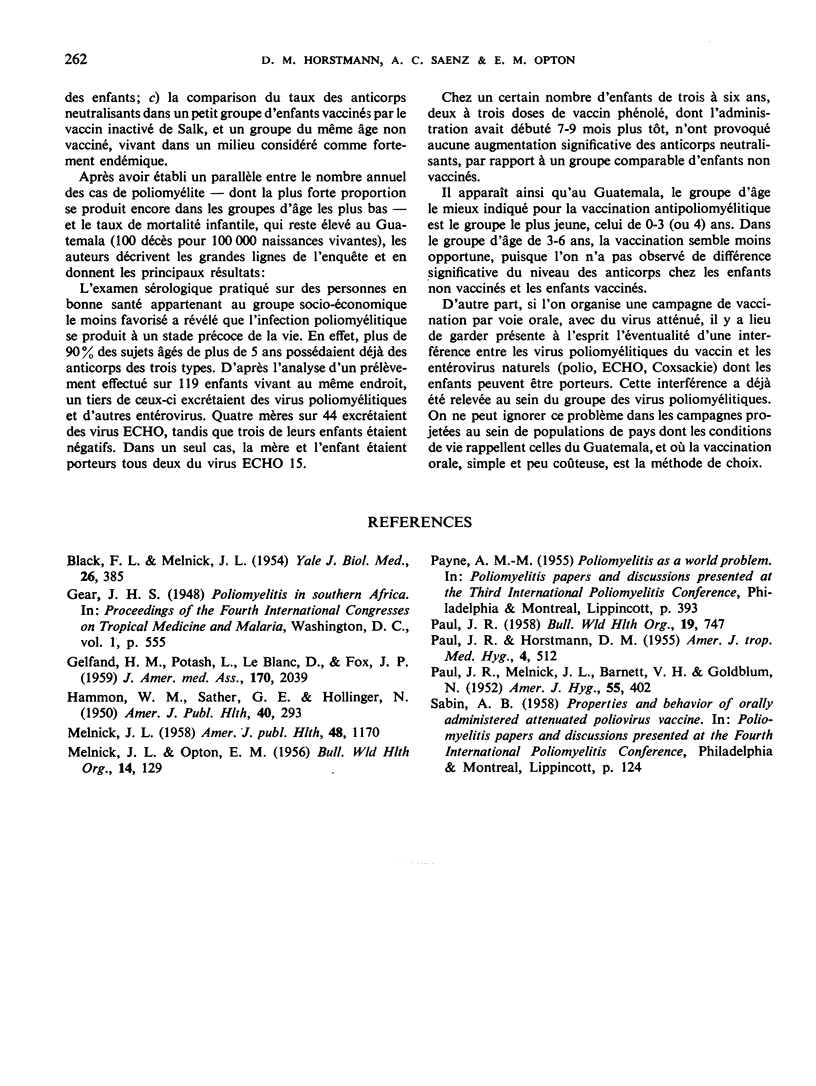
Selected References
These references are in PubMed. This may not be the complete list of references from this article.
- BLACK F. L., MELNICK J. L. The specificity of the complement fixation test in poliomyelitis. Yale J Biol Med. 1954 Apr;26(5):385–393. [PMC free article] [PubMed] [Google Scholar]
- GELFAND H. M., POTASH L., LEBLANC D. R., FOX J. P. Intrafamilial and interfamilial spread of living vaccine strains of polioviruses. J Am Med Assoc. 1959 Aug 22;170(17):2039–2048. doi: 10.1001/jama.1959.03010170001001. [DOI] [PubMed] [Google Scholar]
- HAMMON W. M., SATHER G. E., HOLLINGER N. Preliminary report of epidemiological studies on poliomyelitis and streptococcal infections; Lansing neutralizing antibody and antistreptolysin O surveys of California cities, Texas, North Carolina, Mexico, Pacific Islands, and Japan. Am J Public Health Nations Health. 1950 Mar;40(3):293–306. doi: 10.2105/ajph.40.3.293. [DOI] [PMC free article] [PubMed] [Google Scholar]
- MELNICK J. L., OPTON E. M. Assay of poliomyelitis neutralizing antibody in disposable plastic panels. Bull World Health Organ. 1956;14(1):129–146. [PMC free article] [PubMed] [Google Scholar]
- MELNICK J. L. The use of a portable tissue culture laboratory in a field study of tropical poliomyelitis. Am J Public Health Nations Health. 1958 Sep;48(9):1170–1180. doi: 10.2105/ajph.48.9.1170. [DOI] [PMC free article] [PubMed] [Google Scholar]
- PAUL J. R., HORSTMANN D. M. A survey of poliomyelitis virus antibodies in French Morocco. Am J Trop Med Hyg. 1955 May;4(3):512–524. doi: 10.4269/ajtmh.1955.4.512. [DOI] [PubMed] [Google Scholar]
- PAUL J. R., MELNICK J. L., BARNETT V. H., GOLDBLUM N. A survey of neutralizing antibodies to poliomyelitis virus in Cairo, Egypt. Am J Hyg. 1952 May;55(3):402–413. doi: 10.1093/oxfordjournals.aje.a119532. [DOI] [PubMed] [Google Scholar]


